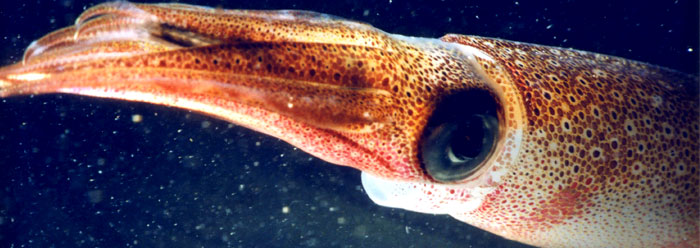Over the past decade or so, scientific research has revealed surprisingly young-looking features in fossils and other artifacts dated in the millions of years. The discoveries include blood vessels in T. rex1 and hadrosaur fossil femurs,2 mummified dinosaur stomach contents,3 mummified dinosaur skin,4 live cells from amber deposits,5 fresh cellulose fibers in supposedly 250 million-year old salt deposits,6 DNA molecules from Neanderthal skeletons,7 and fossil feathers with clearly visible stripes.8
Now “150 million-year–old” squid ink, which was so fresh that scientists used it to write with, adds further doubt in deep time.
A one-inch-long squid ink sac, still black, was discovered when UK paleontologists cracked open a rock in Trowbridge, Wiltshire. After mixing its contents with some liquid ammonia, the scientists were able to draw on paper a picture of the extinct squid using its own ink.
Other similarly preserved creatures were discovered nearby. Excavation leader Dr. Phil Wilby stated that “throughout the world there are perhaps a few dozen examples of soft parts being preserved, but this is really special. I can dissect them as if they are living animals. You can even tell whether it was a fast or slow swimmer, by looking at all the muscle fibres.”9
It is as though fossils from around the world and from strata at various depths are telling scientists that they were all formed recently and rapidly in a catastrophic event such as the global Flood described in Genesis.
Wilby also provided an inadvertent but powerful admission of the young age of the earth by saying that the squid ink was “fossilized so beautifully well that you can actually still write with it. It still looks as if it is modern squid ink. It's absolutely incredible to find something like this.”9
It is only “absolutely incredible” if present geologic processes are presumed to have formed the rock record. If the various strata represent millions and millions of years, then “modern squid ink” in a fossil would be absolutely incredible. In contrast, according to the creation science model, most of the earth’s sedimentary strata were formed during the year-long great Flood. Thus, news of fresh “Jurassic” ink is perfectly consistent with a history based on the biblical account.
References
- Schweitzer, M. H. et al. 2005. Soft-Tissue Vessels and Cellular Preservation in Tyrannosaurus rex. Science. 307 (5717): 1952-1955.
- Schweitzer, M. H. et al. 2009. Biomolecular Characterization and Protein Sequences of the Campanian Hadrosaur B. Canadensis. Science. 324 (5927): 626-631.
- Thomas, B. The Dinosaur Mummy. ICR News. Posted on icr.org September 25, 2008, accessed August 19, 2009.
- Manning, P. L. et al. 2009. Mineralized soft-tissue structure and chemistry in a mummified hadrosaur from the Hell Creek Formation, North Dakota (USA). Proceedings of the Royal Society B. Published online before print July 1, 2009.
- Greenblatt, C. L. et al. 2004. Micrococcus luteus - Survival in Amber. Microbial Ecology. 48 (1): 120-127.
- Griffith, J. D. et al. 2008. Discovery of Abundant Cellulose Microfibers Encased in 250 Ma Permian Halite: A Macromolecular Target in the Search for Life on Other Planets. Astrobiology. 8 (2): 215-228.
- Krings, M. et al. 1997. Neandertal DNA Sequences and the Origin of Modern Humans. Cell. 90 (1):19-30.
- Vinther, J. et al. 2008. The colour of fossil feathers. Biology Letters. 4 (5): 522-525.
- The 150 million-year-old squid fossil so perfectly preserved that scientists can make ink from its ink sac. Archaeology Daily News. Posted on archaeologydaily.com August 18, 2009, accessed August 19, 2009.
* Mr. Thomas is Science Writer at the Institute for Creation Research.
Article posted on August 27, 2009.

















